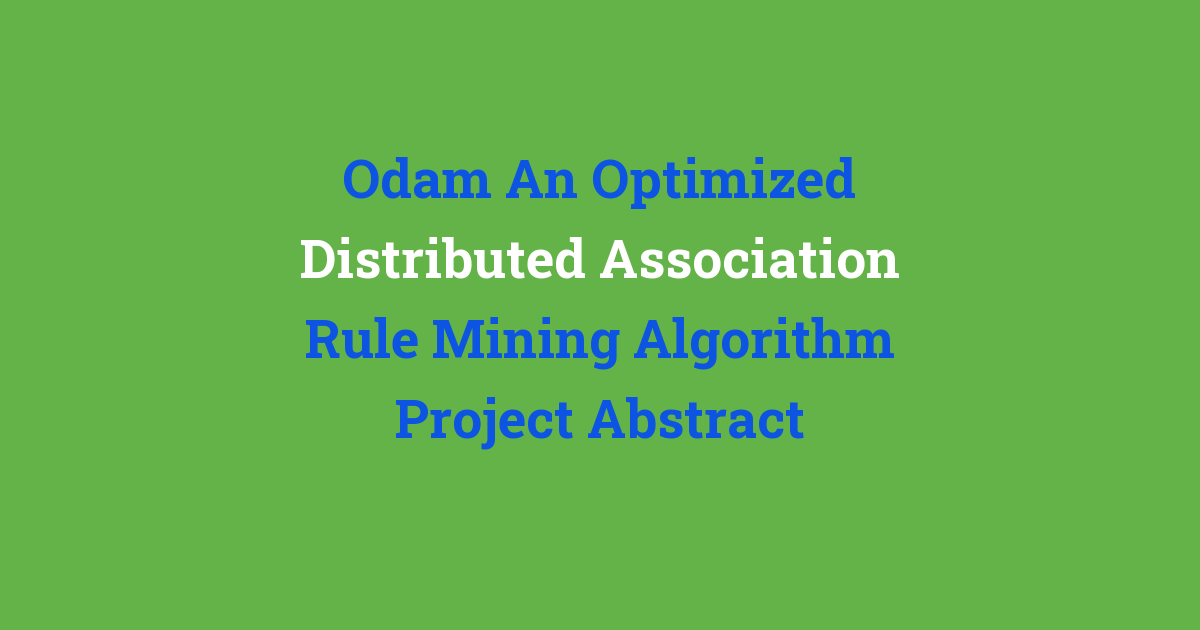Abstract: This project focuses on developing an efficient distributed algorithm for association rule mining, aiming to improve the performance and scalability of the existing methods.
Optimized Distributed Association Rule Mining Algorithm Project Abstract
Introduction:
In the field of data mining, association rule mining is a popular technique used to discover interesting relationships hidden in large datasets. The process involves finding patterns where one set of items in a dataset frequently appears together. However, traditional association rule mining algorithms can be computationally expensive and time-consuming, especially when dealing with large datasets. In this project, we aim to develop an optimized distributed association rule mining algorithm to improve the efficiency and scalability of the process.
Problem Statement:
The existing association rule mining algorithms face challenges when mining large datasets due to the high computational complexity involved. These algorithms often require extensive resources and time to complete the mining process, making them inefficient for real-time applications. Additionally, traditional algorithms may not be suitable for distributed computing environments, limiting their scalability and performance.
Existing System:
The existing association rule mining algorithms, such as Apriori and FP-growth, are widely used in data mining applications. These algorithms work well for small to medium-sized datasets but can struggle to handle larger datasets efficiently. The Apriori algorithm, for example, suffers from a high number of candidate itemsets generated, leading to increased computational overhead. Similarly, the FP-growth algorithm uses a frequent pattern tree structure, which may not be optimal for distributed computing.
Disadvantages:
1. High computational complexity
2. Inefficiency in handling large datasets
3. Limited scalability in distributed environments
4. Time-consuming mining process
5. Suboptimal performance for real-time applications
Proposed System:
Our proposed system is an optimized distributed association rule mining algorithm that aims to address the limitations of existing algorithms. By leveraging the power of distributed computing environments, our algorithm will be designed to efficiently handle large datasets and improve scalability. We plan to implement advanced optimization techniques to reduce computational overhead and enhance the performance of the mining process.
Advantages:
1. Improved efficiency in handling large datasets
2. Enhanced scalability in distributed environments
3. Reduced computational complexity
4. Faster mining process
5. Better performance for real-time applications
Features:
1. Distributed computing support
2. Advanced optimization techniques
3. Scalability for large datasets
4. Real-time data mining capabilities
5. Improved performance metrics
Conclusion:
In conclusion, our project aims to develop an optimized distributed association rule mining algorithm to overcome the limitations of existing algorithms. By improving efficiency, scalability, and performance, we hope to provide a more effective solution for mining association rules from large datasets. Through the implementation of advanced optimization techniques and distributed computing support, we believe our algorithm will offer significant advantages over traditional approaches. Overall, this project contributes to the advancement of data mining techniques and opens up new possibilities for real-time applications in various domains.

